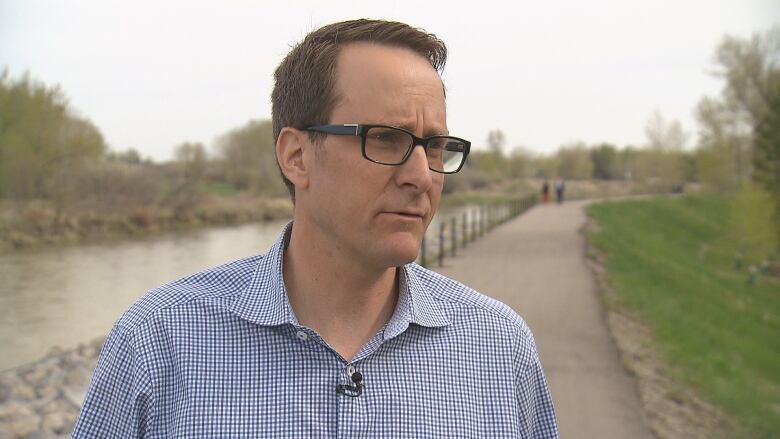Move on, rebuild smarter, elsewhere: flood lessons learned in parts of Alberta
Make decisions 'in the best interests of the community, and the province and the country': High River mayor

The images this week of flooded streets and houses in parts of Quebec and Ontario, andBritish Columbia's experiences with rising watersare all too familiar to Albertans, who in 2013suffered through one of the worst floodsin the province's history.
Thousands of people in dozens of municipalities in Quebec are displaced byrecentflooding as military and navy personnel remained in communities to preparefor possibly more rainfall this weekend. Many residents in Ottawa, among the Ontario areas hit by recent flooding, are just starting toreturn to their homes and assessing the damage, while hundreds in B.C. remain out of their homes after evacuation orders were issued last week.
Nearly four years earlier, the southern Alberta floodwatersthat inundated Calgary, High River, Canmore and more than two dozen other communities following days of heavy rainfallleft an unprecedented swath of destruction resulting in five deaths andtens of thousands being forced from their homes, andcausing damage in excess of $5 billion.
Alberta resident Jane Russell recalled that surveying thedamage was like "walking through a war zone."
"There was debris and things that were never there before, and the silt was three feet [a metre] or more deep."
Russell wasforced out of her home of 25 years in High River, one of the worst-hit communities in 2013.
"From the outside you say, 'Oh it's just water on the street,'but you know their basement is full of water," said Russell.
- Special report: Alberta flood 2013
- Alberta flood report outlines how province can improve disaster response
"It's not even seeing it as much as knowing what they're going to be going through next. The gross smell, the cleanup, the grief of the loss."
Russell and her husband used to live in High River's Wallaceville area. The provincial government bought out all 91 homes in that neighbourhood, and 31 in another, as they were considered too vulnerable to flooding.
Some residents resisted the move, but Russell welcomed it. In2013, she knew there was no going back to her older home when she was allowed near it again once the worst of the water receded.

Firefighters escorted Russell and her husband around her property, andasked them to select only items they would need and pack them into a suitcase.
"I was so in shock," she said. "What do I even want? Like I'd been living with a T-shirtand a pair of jeans, all I really wanted was a pair of shoes."
- Justin Trudeau says Canada must brace for more storm devastation from climate change
- How does flood compensation change depending on where you live?
She has grown philosophical about it in the time since.
"It's just stuff now," she said. Her husband,family and friendsare all still there.
Making tough decisions
Craig Snodgrass, who was elected mayor of High River shortly after the June flood, recalled having to tell residentsthey would have to clear their homes.
"Hardest meetings I ever had in my life and I never want to do it again," he said.

"But when it's for the good and the future of your town, and the good of the community too, as hard as it is, you have to go there."
High River has also taken some less drastic measures to protect itself.
The town invested $400 million to replace oldclay sewer lines, and to build berms: more than 10 kilometres of earth,forming a barrier between the river and the land.
For Snodgrass, one of the biggest lessons learned was not to ignore the increasing frequency of natural disasters.
Southern Alberta, including High River, had experienced floods just eight years earlier, sobetting on inundations only occurring once every 100 years is no longer a safe assumption.
"When you're [a politician], it's not easy,and you have to make decisions that are ...in the best interests ofthe community, and the province and the country," he said.
On Thursday, Prime Minister Justin Trudeaualso urged officials at all levels of government to develop a plan to "rebuild better" as Canada braces for more frequent floods and fires related to climate change.
After touring the Gatineauflood zonesby helicopter with Quebec Premier PhilippeCouillard, Trudeausaid that going forward, officials must also develop a rebuilding strategy that makescommunities more resistant and resilient to extreme weather events.
With files from Carolyn Dunn












_(720p).jpg)


 OFFICIAL HD MUSIC VIDEO.jpg)
.jpg)



























































































